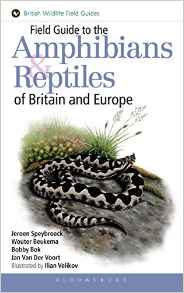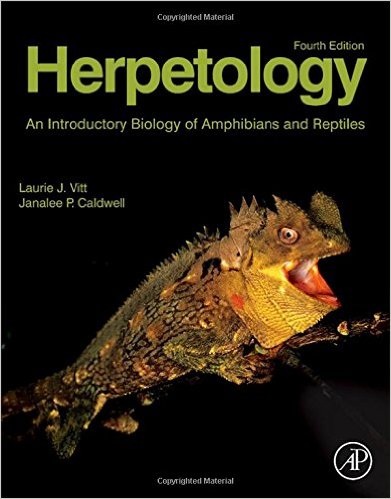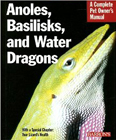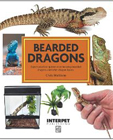Reptiles and amphibians: Books about Lizards
If you want to buy a book, clicking on the book cover will take you directly to that book on the Amazon.co.uk web site.
See also:
- Books on snakes
- Books on tortoises, turtles and terrapins
- Books on amphibians
- Click here for advice on lizards and snakes
- Click here for advice on tortoises and turtles
- Click here for advice on amphibians
- News and research: Reptiles and Amphibians: General Articles
- News and research: Reptiles: Health, disease and physiology

Field Guide to the Amphibians and Reptiles of Britain and Europe (British Wildlife Field Guides)
This new ‘Field Guide to the Amphibians and Reptiles of Britain and Europe’ is especially useful for anyone hiking or camping in Europe, or staying in a rural area – though herps can also be found in cities. Frogs colonise London garden ponds, and lizards are plentiful in southern European cities. The guide is a great help for identifying amphibians and reptiles, because it’s richly illustrated with both photos and drawings. This can be useful if you’re not sure whether a local species of snake is venomous! The book is a sensible size for taking on walks, though it may feel like it weighs a bit after a few miles!
The way that reptiles and amphibians are classified has changed in recent years, and some populations are increasingly under threat. This new book reflects those changes, giving an up-to-date account of where different species are to be found, and how they’re now classified. This field guide looks set to become a classic, both for its attractive presentation and the accuracy of the information it contains.

Herpetology: An Introductory Biology of Amphibians and Reptiles
‘Herpetology’ is an updated version of a classic by Zug, restructured and enlarged by Vitt, a reptile ecologist, and Caldwell, an amphibian biologist. This edition brings a lot of welcome new information, but is sometimes difficult to follow if you’re only interested in amphibians, or just want to know about reptiles. There are advantages in looking at evolution, reproduction, physiology, and behaviour for herps as a whole, in that common traits and variations from the norm become more apparent. However, this book can be frustrating to read if you’re just interested in one species, or just newts, or just snakes, or just amphibians for example. If that’s the case, you’re better off with a book that has a narrower focus.
Who is likely to find this book useful? Anyone studying reptiles and amphibians at university, perhaps as part of a biology course, as well as any herp enthusiast who has enough knowledge to find their way round the book, and enough enthusiasm to look up terms they don’t understand. There’s precious little in print on herps that goes beyond very basic guides, so this is an important book for people who want to be stretched.

Anoles, Basilisks, and Water Dragons (Complete Pet Owner's Manual) [Paperback]
This is the second, updated edition of a very good short introduction to anoles, basiliks and water dragons from Richard Bartlett, who has published extensively on reptiles. It is very clearly written, well set out, and has some useful illustrations. There is a chapter on understanding the special needs and characters of these reptiles. Enthusiasts may want a more in-depth reference book with additional technical details, but these reptiles are especially suited to beginners, and this guide gets novice keepers off to a good start. It is also an inexpensive book, offering good value for money.

Mini Encyclopedia of Bearded Dragons
A new book from veteran Chris Mattison on Bearded Dragons, which are especially popular pets. They can grow quite big, but are easy to tame. They are also handsome lizards, often colourful, and sporting crests to scare off anything that might eat them, or to attract a mate. In addition, they breed freely in captivity, given the right conditions. This book shows how to choose healthy lizards, and how to create the right conditions for them, so they are more likely to give you pleasure for a long time. The book is accessible enough for novices, and informative enough to interest experienced owners. It is also well illustrated, which both makes it easier to follow, and the pictures are a pleasure in themselves.
Chris Mattison is a zoologist with a particular interest in natural history and herpetology. He is a prolific writer and a talented photgrapher, and has carried out many trips all over the world to study reptiles in their narural habitat.

Bearded Dragon Manual (Herpetocultural Library) [Paperback]
A comprehensive, practical guide to the care of bearded dragons, which are particularly attractive herps, and suitable for beginners. They don't have the size problem of some larger reptiles, like iguanas, and tend to be docile. It is worth reading this book before you select your own specimen. You not only gain a good idea of what you'll be taking on, but you'll be able to choose a healthy bearded dragon. Other topics covered include feeding, providing the right environment, and preventing and treating the various afflictions that bearded dragons can be prone to. There's also advice on breeding from your dragons. This is a classic, which has been updated.

The Leopard Gecko Manual (Herpetocultural Library)
Another updated classic, this is an excellent guide to keeping and breeding leopard geckos from reptile specialist, Philippe de Vosjoli. Leopard geckos are a good choice for beginners, because they tend to be hardy and easy to handle. The information here is enough to keep a leopard gecko healthy.There are also illustrations showing the various colour combinations and patterns of this attractive reptile.
This book is concise, and packs in a lot of information. It's especially useful for breeders, because of the detail given on the influence of environment, especially temperature. A great little book.







